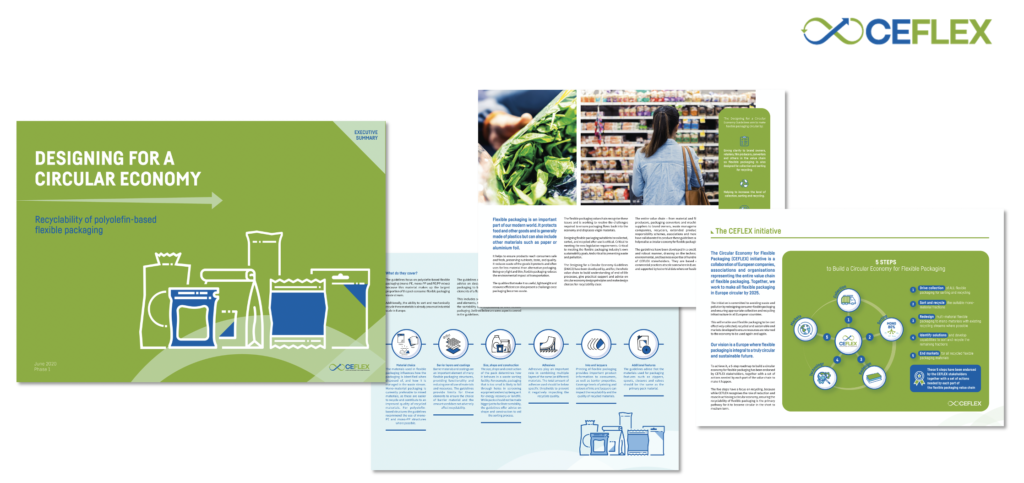As the ‘Designing for a Circular Economy’ guidelines begin to launch, Graham Houlder, CEFLEX project coordinator, talks about the role of design and its effect across the value chain.
Why is it so important to achieve a circular economy for flexible packaging – and what role does packaging design play in achieving it?
Life without flexible (plastic) packaging is both unimaginable and undesirable. Unimaginable because flexible packaging offers functionality and convenience simply not deliverable by other packaging materials. Undesirable because all the alternative packaging solutions would result in a significant increase in both the resources used in product’s packaging and in it’s carbon footprint to deliver similar functionality. And if climate change is not halted and reversed, plastic litter and marine plastics problems will be largely academic – as we are likely to not be around!
This makes it imperative for all flexible packaging to be circular: collecting all packaging more effectively to reduce leakage in to the environment; addressing consumer behaviour and littering; and sorting and recycling flexible packaging, so it returns materials to the economy to be used again.
Making flexible packaging circular needs solutions in two main areas. First, infrastructure and capacity: to collect sort and recycle it, and second, sustainable markets. It has to be more interesting economically and environmentally for products that can use recycled materials to use them.
Whilst Extended Producer Responsibility (EPR) systems will also need to be re-designed to make these two elements possible, it is flexible packaging design that is vital in ensuring that it can be recycled and returned to the economy at an acceptable cost.
What has been stopping us from designing easy to recycle flexible packaging to date and how will the ‘Designing for a Circular Economy’ guidelines from CEFLEX help us overcome these hurdles?
Until recently, only small pockets of society recognised that our earth’s resources are finite, and that going circular keeps resources in the economy to be re-used again and again. Most of society was quite okay with them being recovered via waste to energy incinerators or going to landfill.
These end of life scenarios for flexible packaging meant that their design was focused solely on delivering increased functionality along the value chain at minimum cost. However, society has thankfully moved on – placing far greater importance on the environment and sustainability. We now require “circular thinking” in everything we do and use; including from our flexible packaging.
This change in expectations means flexible packaging must be designed with circularity clearly in mind.
It is therefore essential to provide designers, brand owners, retailers, packaging specialists and beyond clarity on what can be collected, sorted, recycled to maximise the amount of material returned to the economy.
The CEFLEX guidelines provide this with credibility and authority thanks to the unique collaborative effort of hundreds of stakeholders from across the value chain that have helped shape them.
Following the same design rules, in turn, helps build scale and quality of the recycled material streams. If designers all did their own thing, it would simply be impossible for the sorters and recyclers to process the huge range of different materials effectively and efficiently.
How will widespread adoption of the guidelines change the flexible packaging value chain?
Widespread adoption of the guidelines and implementation of them is essential to justify establishing collection, sorting and recycling systems for flexible packaging in all European countries.
These systems need scale to operate effectively and efficiently. To achieve it, all parts of the value chain need to rethink and optimise their part so the final package can be collected, sorted into the desired fraction – and all of these fractions recycled and returned to the economy.
For the most part, this means favouring mono-material flexible packaging as these are the simplest to sort and recycle and already form over 80% of the flexible packaging placed on to the market. The D4ACE guidelines provide the necessary insights into what end of life infrastructure needs, and how it will develop in the future based on what is already happening successfully in other countries.
Consensus, alignment and all moving forward together on design to meet these requirements and innovation to further improve functionality and recyclability is critical to achieving a circular economy for flexible packaging.

